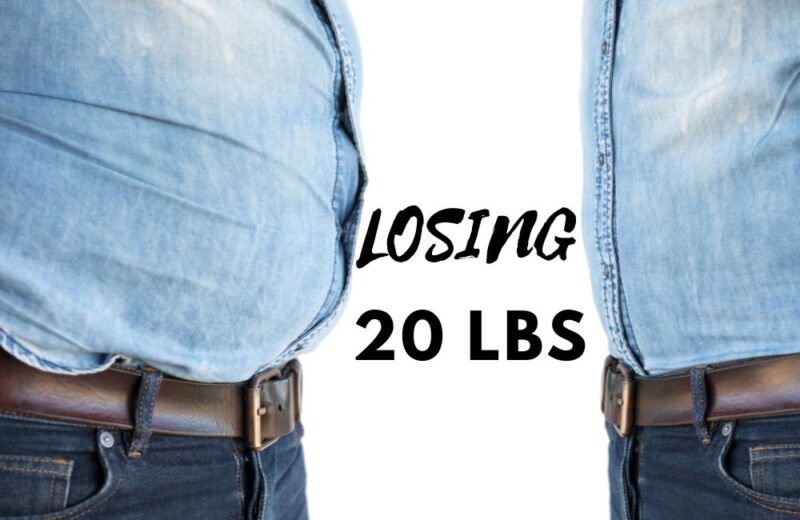How Long Does It Take To Drop 20 Pounds

The quest to lose weight, particularly a noticeable 20 pounds, is a journey fraught with misinformation and unrealistic expectations. Fad diets promising rapid results often dominate headlines, but health experts caution against quick fixes, emphasizing sustainable strategies for long-term well-being. Understanding the timeframe for shedding 20 pounds safely and effectively requires a deeper dive into the science of weight loss and the individual factors that influence it.
The central question—how long does it realistically take to lose 20 pounds?—isn’t easily answered with a single number. The timeframe depends heavily on individual metabolism, dietary habits, exercise routine, and overall health status. This article explores the science-backed guidelines for safe weight loss, dissects the factors influencing the process, and provides practical advice for achieving sustainable results, separating fact from fiction in the often-confusing world of weight management.
The Science of Safe Weight Loss
According to the Centers for Disease Control and Prevention (CDC), a safe and sustainable rate of weight loss is 1 to 2 pounds per week. This rate allows the body to adjust gradually, minimizing the risk of muscle loss and metabolic slowdown. Therefore, losing 20 pounds at this rate would take approximately 10 to 20 weeks.
Rapid weight loss, often defined as losing more than 2 pounds per week, is generally discouraged without medical supervision. Such drastic measures can lead to dehydration, electrolyte imbalances, muscle loss, and even gallstone formation. A balanced approach that combines healthy eating and regular physical activity is crucial for long-term success.
Factors Influencing Weight Loss Time
Numerous factors impact the rate at which individuals lose weight. Metabolism, the process by which the body converts food and drink into energy, plays a significant role. People with higher metabolisms tend to burn more calories at rest, potentially leading to faster weight loss.
Age, sex, and genetics also contribute to metabolic differences. Men generally have a higher muscle mass than women, which translates to a higher resting metabolic rate. Furthermore, genetics can influence how efficiently the body processes and stores fat.
Dietary habits are perhaps the most critical determinant of weight loss. Consuming a calorie-restricted diet, where you burn more calories than you consume, is essential for weight loss. The specific composition of the diet, including the balance of macronutrients (proteins, carbohydrates, and fats), also matters.
Regular physical activity is another vital component. Exercise not only burns calories but also helps build and maintain muscle mass, which further boosts metabolism. Combining cardiovascular exercise, such as running or swimming, with strength training is generally recommended for optimal results.
Creating a Sustainable Weight Loss Plan
A successful weight loss plan should be personalized and sustainable. This involves setting realistic goals, making gradual changes to dietary habits, and incorporating regular physical activity into the daily routine. Consulting with a registered dietitian or certified personal trainer can provide valuable guidance and support.
Focus on making small, manageable changes rather than attempting drastic overhauls. For example, swapping sugary drinks for water, adding a serving of vegetables to each meal, or taking the stairs instead of the elevator can make a significant difference over time. Consistency is key to achieving long-term results.
The Role of Nutrition
Prioritize whole, unprocessed foods, such as fruits, vegetables, lean proteins, and whole grains. These foods are nutrient-dense and generally lower in calories than processed foods. Pay attention to portion sizes and avoid excessive snacking.
Protein is particularly important for weight loss as it helps promote satiety and preserve muscle mass. Aim to include a source of protein in each meal. Complex carbohydrates, such as whole grains and vegetables, provide sustained energy and fiber, which aids in digestion and helps control appetite.
The Importance of Exercise
Aim for at least 150 minutes of moderate-intensity aerobic exercise or 75 minutes of vigorous-intensity aerobic exercise per week, as recommended by the American Heart Association. Include strength training exercises at least two days per week to build and maintain muscle mass.
Find activities that you enjoy and that fit into your lifestyle. This will make it more likely that you will stick with your exercise routine in the long term. Consider joining a gym, taking group fitness classes, or exercising outdoors.
Potential Pitfalls and How to Avoid Them
Weight loss is not always a linear process. Plateaus, where weight loss stalls despite continued effort, are common and can be discouraging. Don't give up! Adjusting your calorie intake, increasing your exercise intensity, or trying a different type of workout can help break through a plateau.
Avoid restrictive diets that eliminate entire food groups, as these are often unsustainable and can lead to nutrient deficiencies. Be wary of fad diets promising rapid weight loss, as these are often based on pseudoscience and can be harmful to your health. Remember that sustainable weight loss is a gradual process.
Looking Ahead: Maintaining Weight Loss
Losing weight is only half the battle; maintaining that weight loss over the long term is even more challenging. Continuing to follow a healthy diet and exercise regularly is essential for preventing weight regain.
Regular self-monitoring, such as tracking your weight and food intake, can help you stay on track. Be prepared to adjust your plan as needed to accommodate changes in your lifestyle or metabolism. Seeking ongoing support from a healthcare professional or support group can also be beneficial.
In conclusion, the timeframe for losing 20 pounds varies depending on individual factors, but a safe and sustainable rate is generally 1 to 2 pounds per week. Focus on creating a personalized plan that combines healthy eating, regular exercise, and behavioral changes for long-term success. Remember that the journey to a healthier weight is a marathon, not a sprint.


















